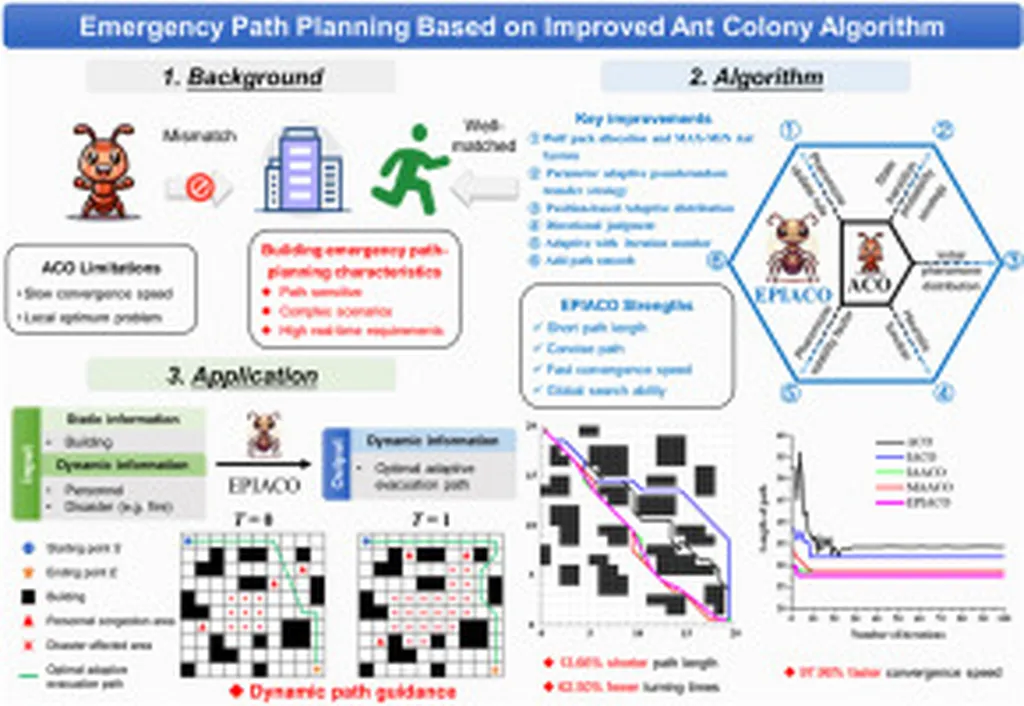Researchers from the University of Granada, led by A. M. Mora and J. J. Merelo, have developed a novel algorithm designed to optimize military unit pathfinding in simulated battlefield environments. Their work, titled “CHAC: A MOACO Algorithm for Computation of Bi-Criteria Military Unit Path in the Battlefield,” introduces a Multi-Objective Ant Colony Optimization (MOACO) approach to solve a critical challenge in military logistics: finding paths that minimize resource expenditure while maximizing safety.
The algorithm, named CHAC, addresses the complex problem of balancing two conflicting objectives—resource efficiency and safety—when navigating a battlefield. Traditional pathfinding methods often struggle with such multi-objective optimization problems, where improving one metric can negatively impact another. CHAC, however, leverages the swarm intelligence principles of ant colony optimization to explore and evaluate multiple potential paths simultaneously, identifying those that best satisfy both objectives.
The researchers tested CHAC using two distinct state transition rules. The first rule employs an aggregative function that combines heuristic and pheromone information related to both objectives, effectively merging them into a single evaluation metric. The second rule is based on the dominance concept from multi-objective optimization, where paths are evaluated based on their non-dominance in the objective space. Both rules were evaluated across various simulated battlefield scenarios, each with different levels of complexity and difficulty.
The results demonstrated that CHAC outperformed a greedy algorithm, which served as the baseline for comparison. The greedy algorithm, while straightforward, often fails to account for the intricate trade-offs between resource use and safety. In contrast, CHAC’s ability to explore a broader solution space allowed it to identify paths that were not only more efficient but also tactically superior. Notably, the aggregative function generally yielded better results than the dominance-based approach, suggesting that combining objectives into a single metric may be more effective in this context.
Beyond its technical achievements, CHAC offers practical applications for military operations. In real-world scenarios, commanders must make rapid, high-stakes decisions about unit movements, often under conditions of uncertainty and risk. An algorithm like CHAC could provide decision-support tools that help optimize these movements, ensuring that units reach their objectives with minimal resource expenditure and maximum safety. This could be particularly valuable in dynamic and hostile environments where traditional planning methods may fall short.
The research also highlights the broader potential of bio-inspired algorithms in defence and security applications. Ant colony optimization, inspired by the foraging behaviour of ants, has proven to be a powerful tool for solving complex optimization problems. By adapting this approach to military logistics, the researchers have demonstrated how nature-inspired techniques can enhance strategic decision-making.
As military technologies and tactics evolve, the need for sophisticated computational tools will only grow. CHAC represents a significant step forward in this domain, offering a robust framework for addressing the multi-objective challenges inherent in military operations. Its success underscores the importance of interdisciplinary research, where insights from computer science, mathematics, and military strategy converge to drive innovation. Read the original research paper here.

